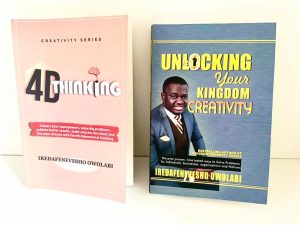How to Solve Problems with Mindstorming

In today’s world, where conventional thinking often falls short, it’s essential to tap into the depths of your mind to find innovative solutions to problems. While the conscious mind plays a significant role in decision-making, it’s the combination of conscious and subconscious thinking that can lead to extraordinary results.
Mindstorming, a technique that leverages both realms of the mind, allows us to transcend traditional boundaries and discover unconventional approaches to problem-solving.
In this blog, we will delve deeper into the concept of mindstorming and explore how it can unleash your creativity and revolutionize your problem-solving abilities.
Click to jump ahead
ToggleMindstorming vs Brainstorming
When we engage in brainstorming, we harness the power of our minds to generate ingenious solutions based on the information, knowledge, and experiences stored in our brains. Mindstorming takes idea generation to a more profound level by tapping into both the conscious and subconscious mind.
While brainstorming focuses primarily on conscious thinking, mindstorming expands our exploration to the realm of the subconscious. Our subconscious mind possesses immense creative potential and can offer unconventional perspectives and insights.
By incorporating both realms of the mind, mindstorming allows us to unlock deeper levels of creativity and discover solutions that go beyond conventional thinking. It involves introspection, reflection, and the exploration of intuitive ideas that may not have emerged solely through conscious brainstorming.
Can We Solve Problems with Mindstorming?
Mindstorming is a powerful technique that taps into the potential of both the conscious and subconscious mind to solve problems and generate innovative solutions.
By expanding our thinking beyond the limitations of logical reasoning and conventional approaches, mindstorming opens up new avenues for problem-solving. Let’s explore how mindstorming can be an effective tool in tackling various challenges. If you want to know more about the conscious mind, check out this blog.
How Does Mindstorming Help You Become a Problem-Solver?
- It helps you Go Beyond the Conscious Mind:
Your conscious mind, although capable of rational thinking and logical analysis, has its limitations. It often operates within the framework of known information and experiences. However, many complex problems require thinking beyond what is readily available to you.When you mindstorm, you are able to access your subconscious mind, which holds a vast reserve of untapped ideas, memories, and patterns. By tapping into this deeper level of thinking, you can explore unconventional solutions that the conscious mind might overlook.
- It helps you Unleash Creative Thinking:
Mindstorming encourages the free flow of ideas without judgment or limitations. It creates an environment where your creativity can flourish.By engaging the subconscious mind, which is more closely connected to your creative faculties, mindstorming enables you to think outside the box and explore unique perspectives. This approach often leads to breakthrough solutions and innovative approaches to problem-solving.
For more insight into how to unlock your creativity, check this out.

Unlocking Your Creativity Book - It helps you Make Unconscious Connections:
The subconscious mind has a remarkable ability to make connections and associations that may not be apparent to the conscious mind.Through mindstorming, you can tap into this innate capacity and allow your mind to explore uncharted territories.
Ideas that seem unrelated on the surface may reveal surprising connections when you delve deeper into the subconscious realm.
These connections can provide valuable insights and fresh perspectives that can lead to effective problem-solving.
- It helps you Access Intuition and Gut Feelings:
Mindstorming involves more than just analytical thinking; it embraces intuitive insights and gut feelings.The subconscious mind has access to a wealth of information and wisdom that may not be readily accessible to the conscious mind.
By incorporating intuition into your mindstorming process, you can tap into this inner guidance system and gain valuable insights that can guide your problem-solving efforts.
If you would like to learn more about this concept, check out my latest books titled “Unlocking your creativity” and “4D Thinking“.

Unlocking Your Creativity and 4D Thinking - It helps you Enhance Collective Thinking:
Mindstorming is not limited to individual brainstorming; it can be a collaborative process as well.When multiple minds come together to engage in mindstorming, the collective power of the subconscious mind is amplified.
Through collaborative mindstorming sessions, diverse perspectives and ideas merge, leading to even more innovative solutions and problem-solving approaches.
The Subconscious Mind’s Role in Problem-Solving:
The conscious mind, driven by logic and reason, often relies on available facts and data to solve problems. However, its limitations can restrict us to conventional solutions.
By engaging the subconscious mind in the process, mindstorming takes problem-solving to a whole new level.
The subconscious mind has the power to explore possibilities beyond the realm of conscious thinking, making connections and generating ideas that are “beyond the box.”
Renowned individuals like Donald Trump, Thomas Edison, and Albert Einstein have embraced the power of their subconscious minds to solve complex problems and make critical decisions with exceptional outcomes.
If you would like to know more about brainstorming, you can read about how to brainstorm ideas and creative solutions here.
The Deliberate Art of Mindstorming:
Mindstorming is not a matter of chance; it is a deliberate art that can be cultivated and nurtured. One effective technique, as suggested by Brian Tracy in his book “Goals,” involves writing down the problem you want to solve at the top of a sheet of paper.
For example, if you aim to boost sales for your business, write, “How can I boost sales of my product (service)?”
Then, generate a list of ten, twenty, or more potential solutions. This exercise triggers both your conscious and subconscious minds to work together.
The more ideas you generate, the closer you get to uncovering unique and groundbreaking solutions.
Select the most compelling ideas and repeat the process, breaking them down further until you have actionable steps.
Steps to Solve Problems with Mindstorming
Step 1: Define the Problem
Before diving into mindstorming, it is crucial to clearly define the problem you want to solve. A well-defined problem statement provides focus and direction for the mindstorming process.
Ask yourself questions such as: What is the main issue? What are the underlying causes? What are the desired outcomes? By answering these questions, you set the stage for effective problem-solving.
Step 2: Set the Mindstorming Environment
Find a quiet and comfortable space where you can concentrate without distractions. Gather the necessary materials such as a whiteboard, sticky notes, markers, or a digital mind mapping tool.
Having an open and positive mindset is also crucial during the mindstorming session. Encourage all participants to suspend judgment and embrace all ideas, no matter how wild or unconventional they may seem.
Step 3: Generate Ideas Freely
Begin by writing down the central problem statement in the center of your mind map or whiteboard. Encourage everyone to contribute ideas freely, without any criticism or evaluation.
Each idea should be written on a separate sticky note or branch of the mind map.
The goal is to generate as many ideas as possible, allowing your thoughts to flow spontaneously. Remember, even seemingly unrelated or bizarre ideas can spark creativity and lead to breakthrough solutions.
Step 4: Make Connections
Once a considerable number of ideas have been generated, look for connections and associations among them.
Are there any common themes or patterns emerging? Can you combine or build upon existing ideas to create new ones?
Use lines, arrows, or color-coded branches to visually represent these connections. The interconnectedness of ideas often leads to unique perspectives and innovative solutions.
Step 5: Evaluate and Refine
After the mindstorming session, it’s time to evaluate and refine the generated ideas. Look for the most promising and feasible solutions based on the desired outcomes of the problem.
Consider the resources, time, and constraints involved in implementing each idea.
Group similar ideas together and prioritize them based on their potential impact.
Seek feedback from colleagues or experts to gain different perspectives and refine your ideas further.
Step 6: Take Action
Select the most viable solution(s) from your refined list of ideas. Create an action plan with clear steps, deadlines, and responsibilities.
Break down the solution into manageable tasks and allocate resources accordingly.
Remember, problem-solving doesn’t end with generating ideas—it requires proactive implementation and execution.
Stay committed to the process, monitor progress, and make adjustments along the way as needed.
For more tips on problem-solving, check this out.
Conclusion:
Mindstorming is a powerful problem-solving technique that taps into your creative potential and helps you generate innovative solutions. By fostering a collaborative and open environment, mindstorming enables you to explore ideas freely, make connections, and refine your thinking.
Embrace the diversity of perspectives and be open to unconventional ideas. With practice, mindstorming can become an invaluable tool for tackling complex problems and driving meaningful change.
So, unleash your creativity and begin to mindstorm your way out of your personal, organizational and national problems.
If you want a free chapter of my upcoming book titled “Ignite Your Creativity”, please drop your email here. To grab a hard copy, check it out here.

PS: If you would like to have me speak or deliver a keynote presentation at your event, seminar or conference, please fill this request form, and let us get the conversation going. Thank you.
If you found this valuable, or you have a question or different perspective, please leave a comment below and I will be happy to engage with you in the comment section.



